April 4, 2010
To other pictures
Rocker Boxes
[Click pictures for a better view]
There is not much mechanically mysterious in the Triumph rocker boxes,
but they do have a few wrinkles, and are subject to leaking in a couple
of places. One potential leaking location is the gasket surface.
One way to help ensure a tight seal here is to linish both
the surface of the rocker box and the head. Don't remove any
more material than necessary, since rocker geometry could be affected
if too much is removed.
The second place where some Triumphs chronically leak is where the head
of the rocker sindle is held in the rocker box housing. This
area is sealed with an O ring, which is probably adequate, except that
it can be a challenge to install the spindle without damaging the O
ring. What often happens is that the part of the O ring that
is proud of the spindle head, rather than compressing into the O ring
groove, just gets sheared off by the housing bore. Some say
that this is normal, or even part of the design, but I don't buy it.
There is apparently a factory tool that works by
precompressing the O ring before it goes into the housing.
Some builders accomplish the same thing by putting a chamfer
on the edge of the housing bore to ease the compression of the seal.
Others try to "worry" the O ring into the bore with a small dull screw
driver or some similar tool as the spindle is brought home.
After attempting the worrying process without much success, I
tried the chamfer with some sandpaper on a tapered mandrel, and it
appeared to work. However, when I removed the spindle, the
damage to the O ring was obvious. I decided to get more
scientific about it.
I calculated the range of angles for the chamfer taper that would give
an opening close to the size of the uncompressed O ring, while not
going deep enough into the bore to change its diameter at the O ring
seating position, then looked for a tapered hand reamer that wold work.
Also, I needed some way to keep the reamer aligned in the
bore so I didn't end up with a cockeyed taper.
This is what I ended up using. The reamer has an included
angle of about ten degrees--just about the minimum that would work.
The little mandrel was made to fit the spindle bore in the
center and opposite end of the housing, keeping everything aligned.
The top of the mandrel has a countersunk depression for the tip of
the reamer to go into. The spring just keeps the mandrel
pushed up against the reamer so it wouldn't wander off.
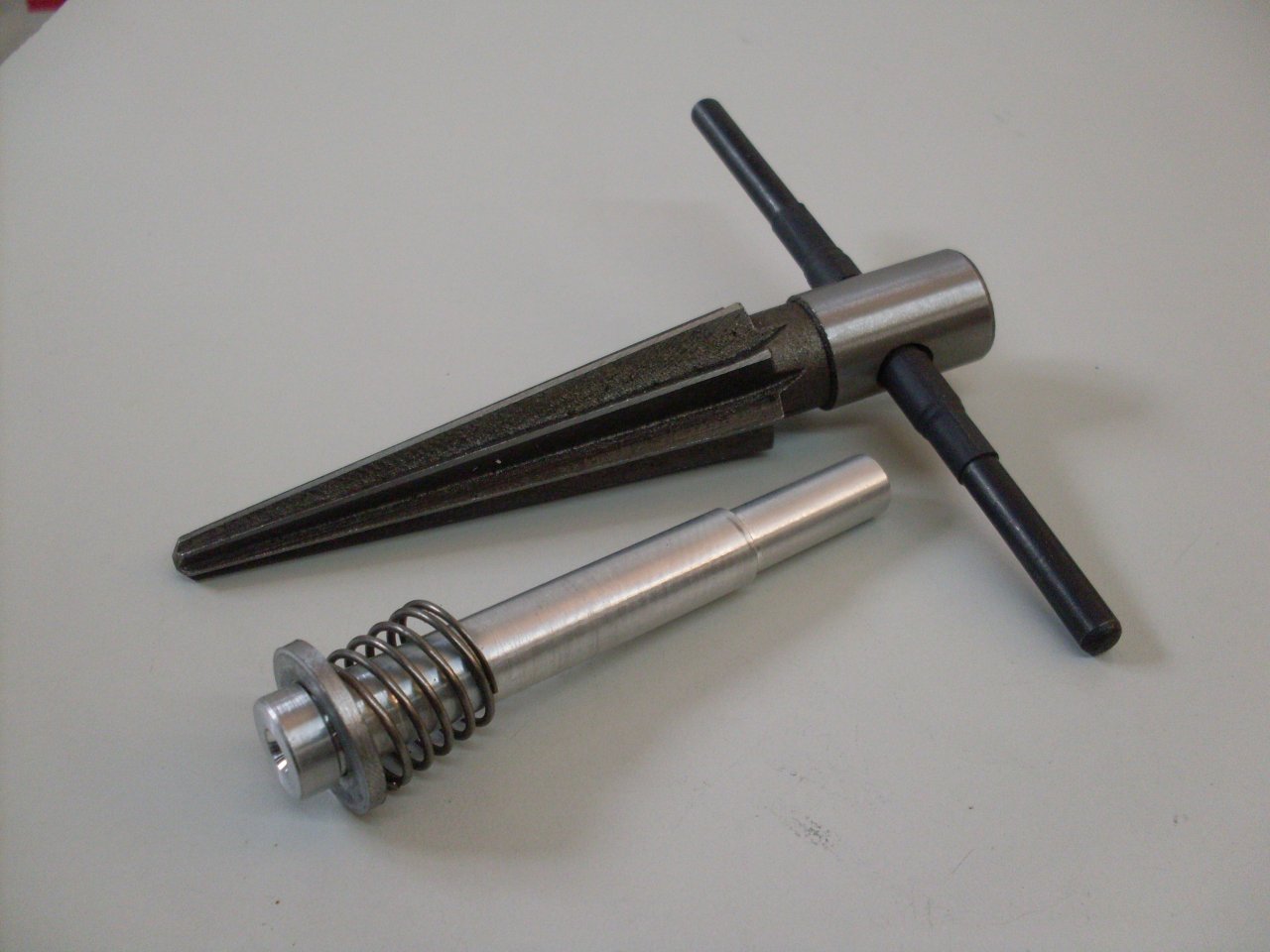
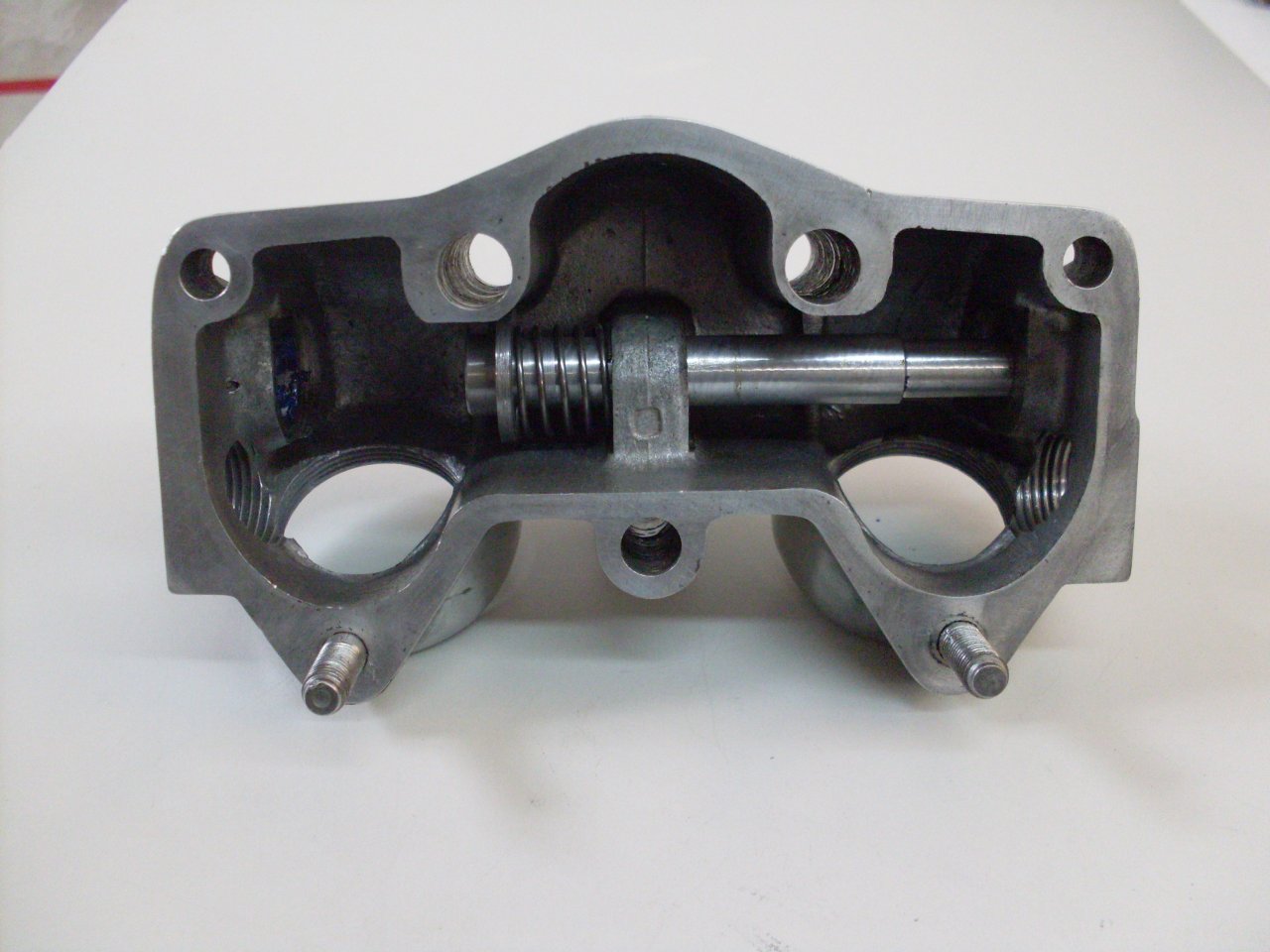
First I blued
the bore so it would be easy to gage progress, then started movin'
metal.
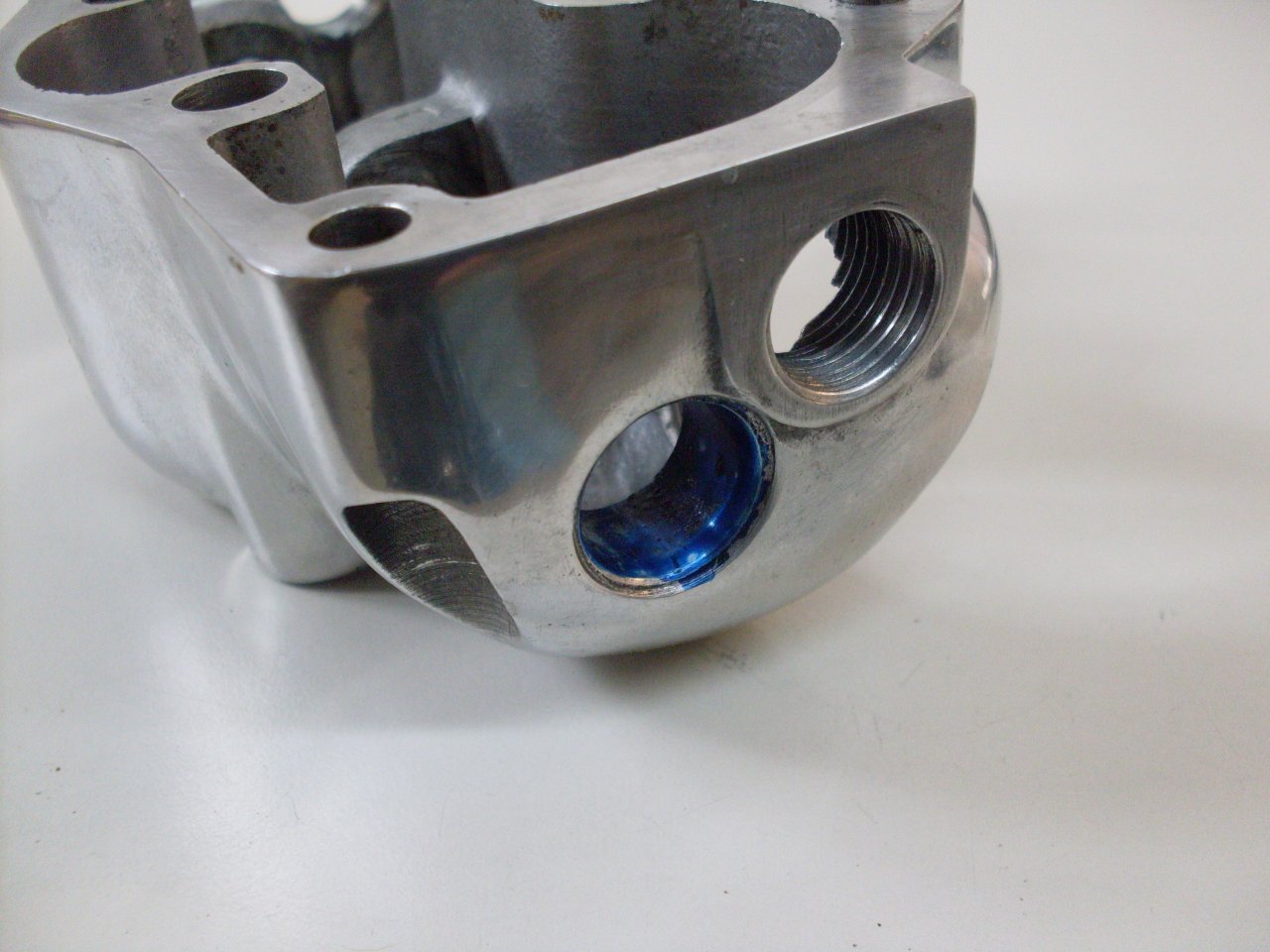
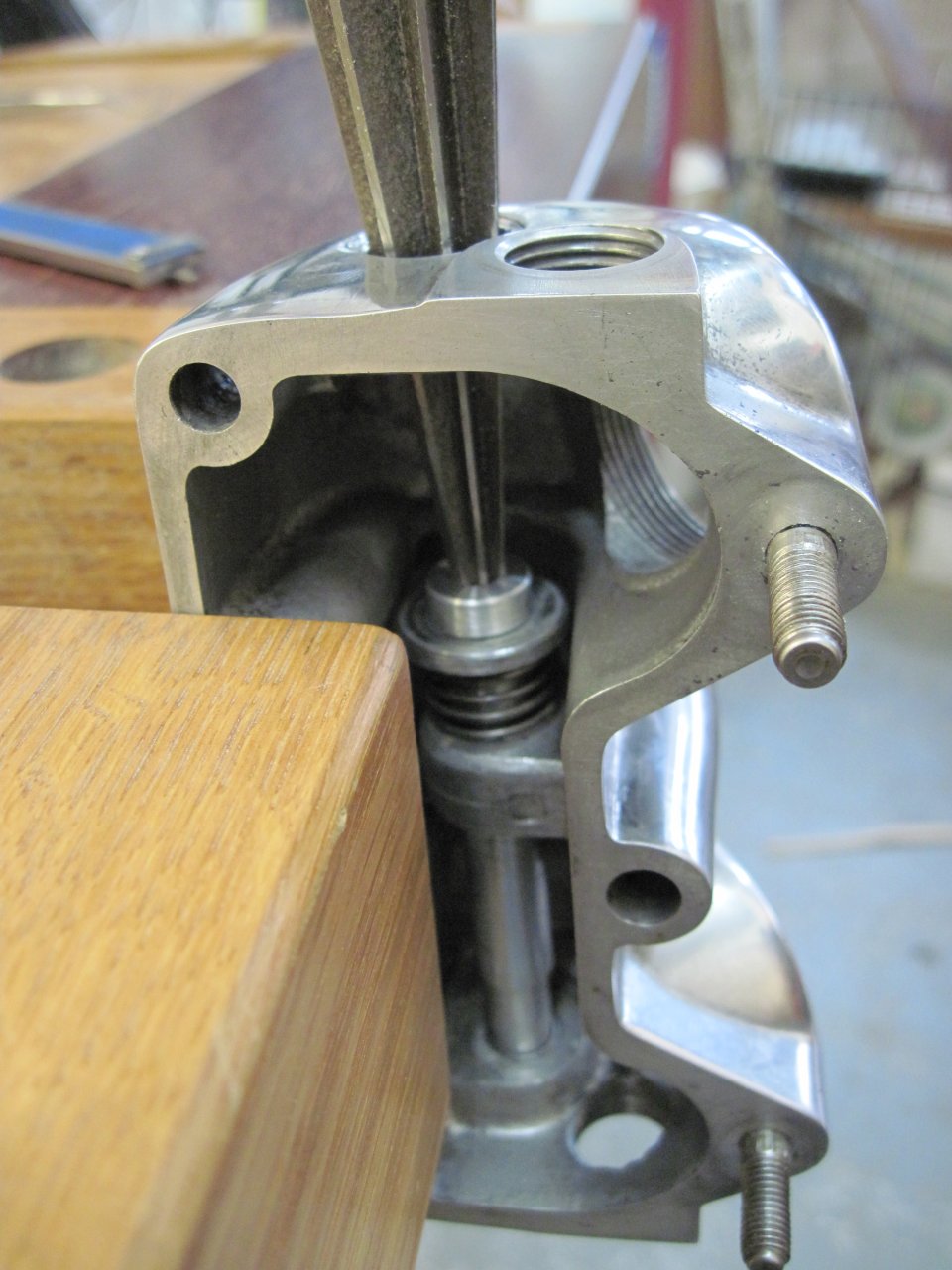
By measuring the spindle,
I knew I could only go a maximum of about 0.200" into the bore before I
got close to the O ring seating position. The reamer I had
was not a precision instrument, so it left a fairly rough surface, so
when I got close to the final taper to size, I polished the
taper with fine carbide paper wrapped around the reamer.
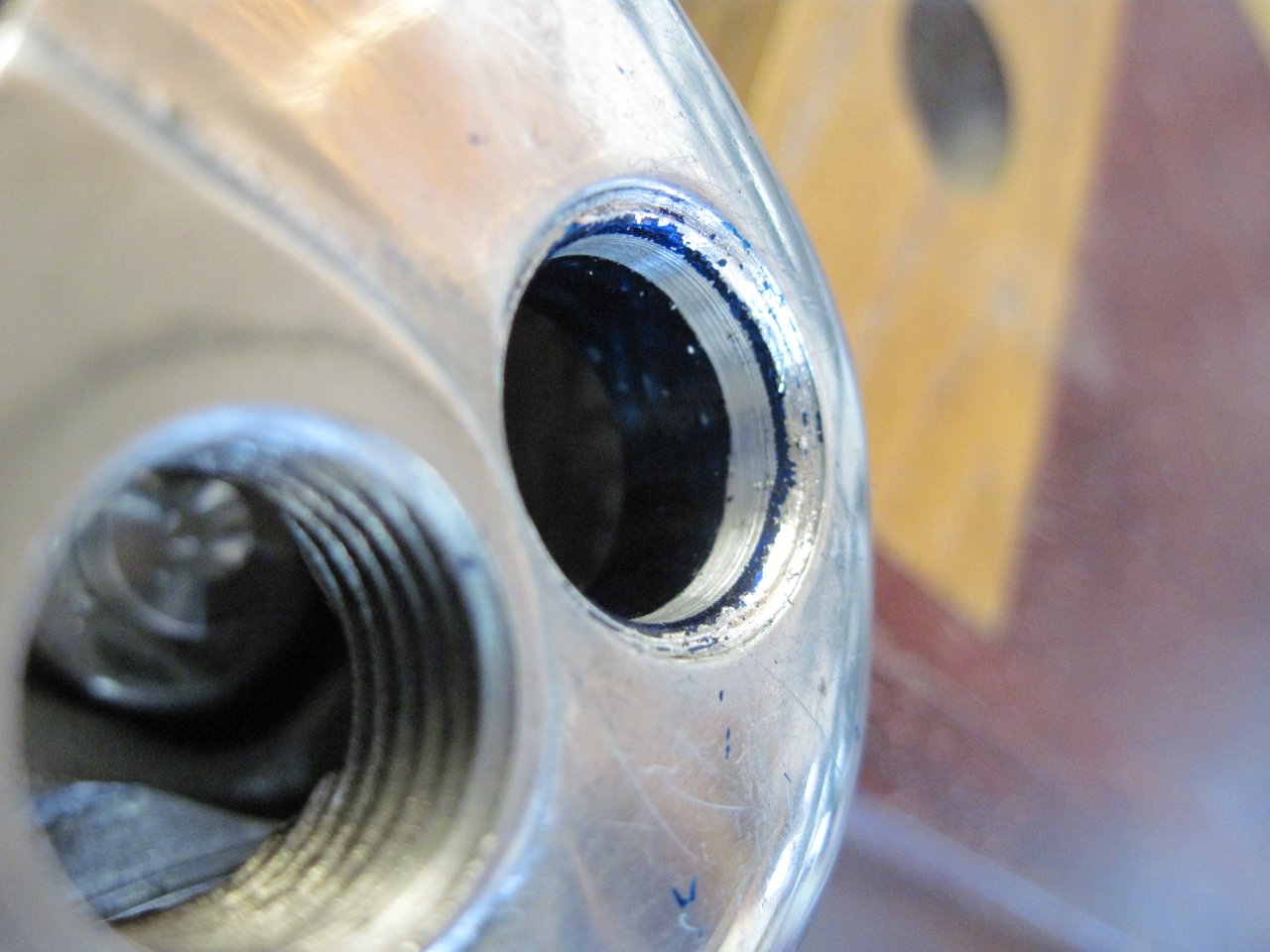
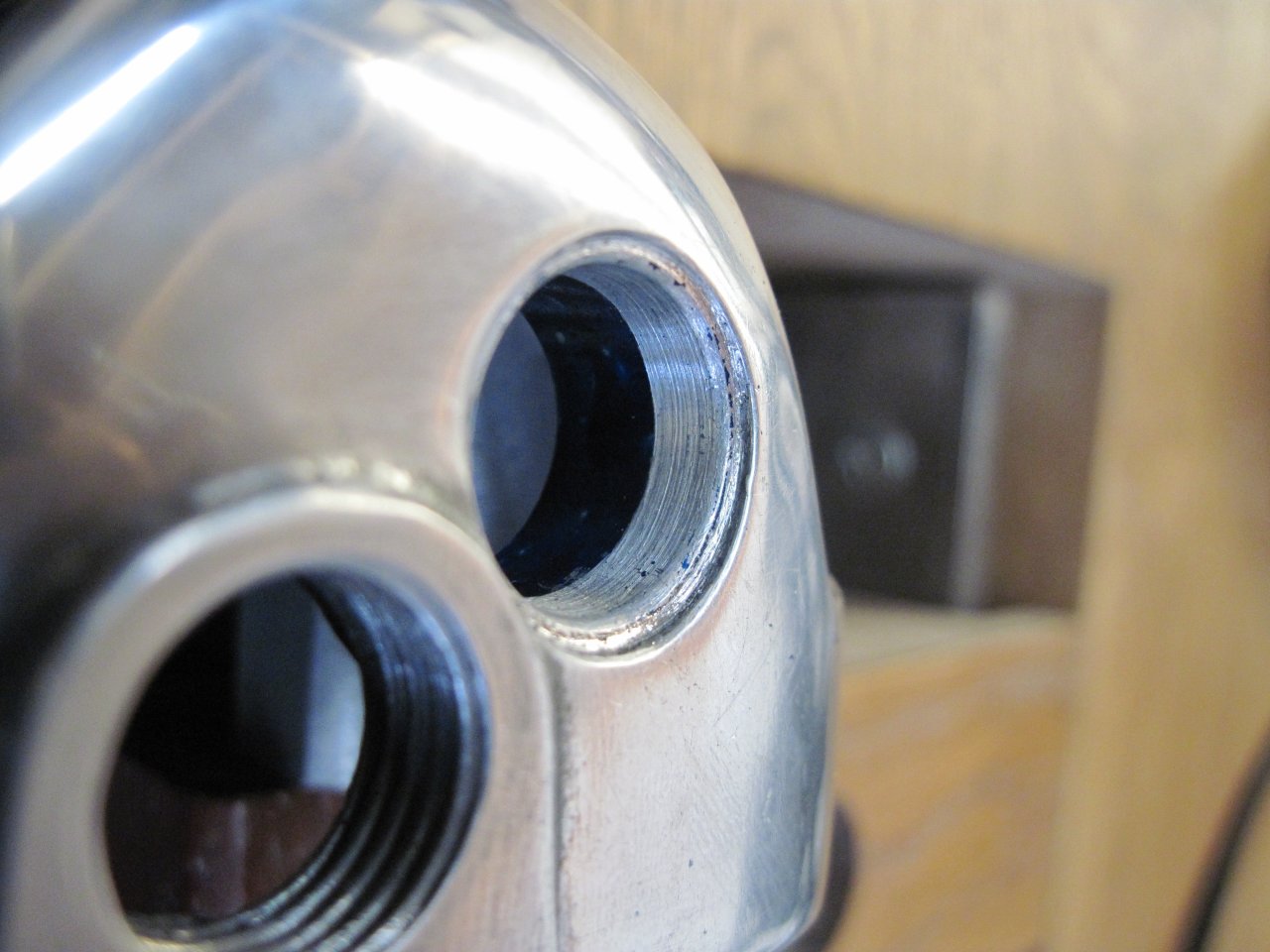
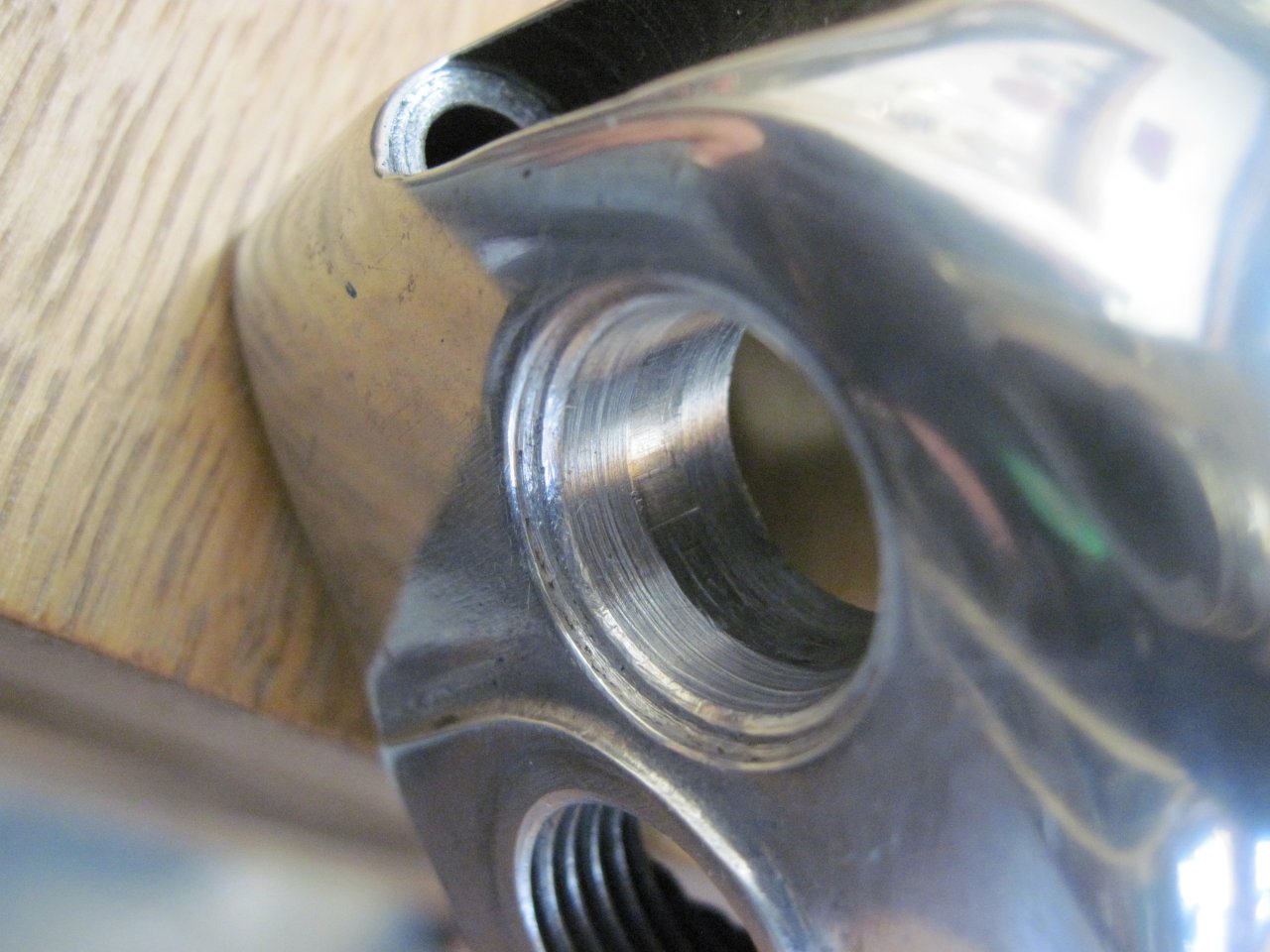
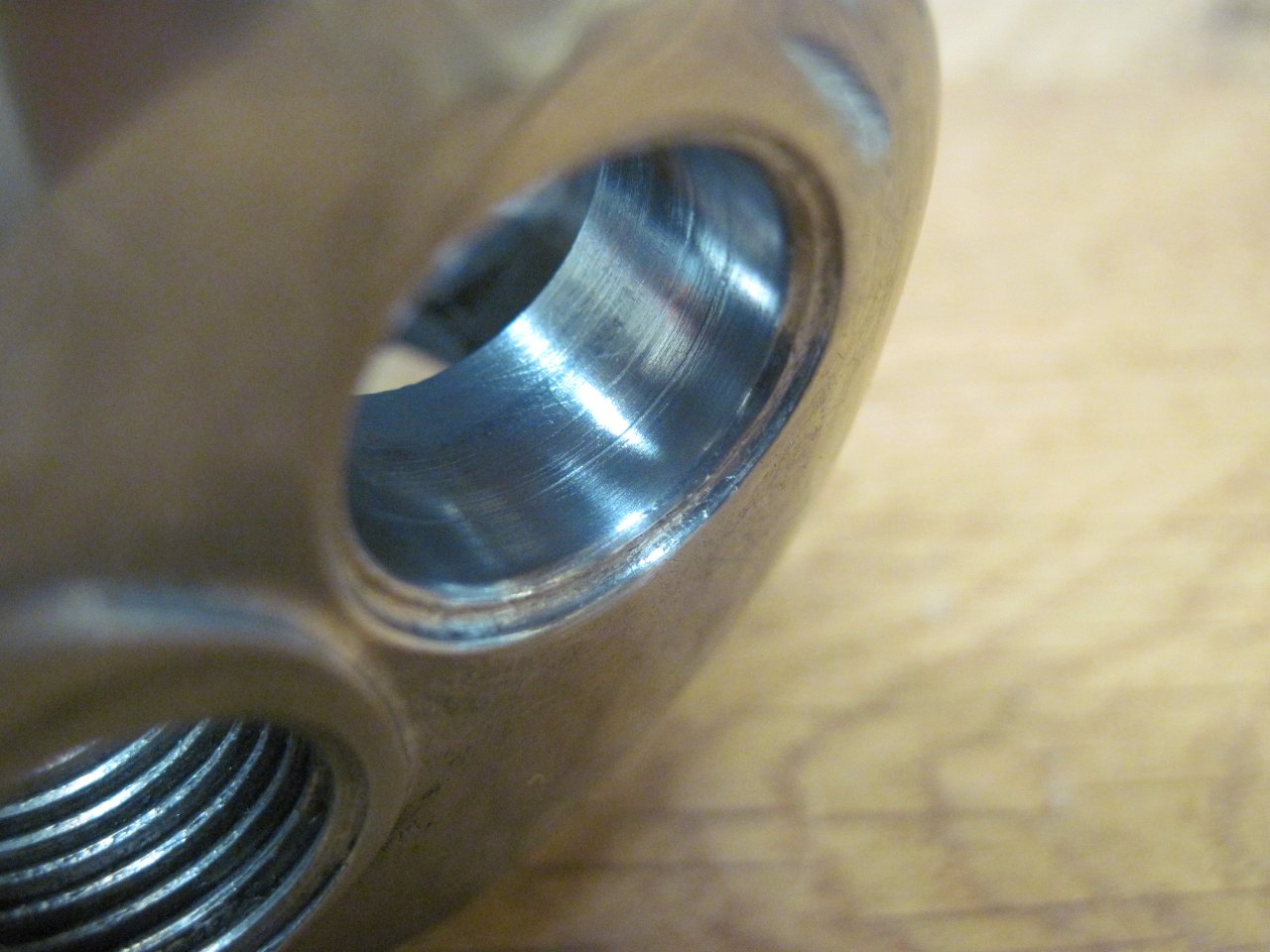
Next, to the
spindles. People who have bikes that leak from the spindles
maybe wouldn't know, but since the spindles are steel, the exposed end
will rust if there is no oil on it to protect it. Assuming
I'll be successful in keeping the spindles oil free in this area, I
decided to selectively zinc plate the ends of the spindles.
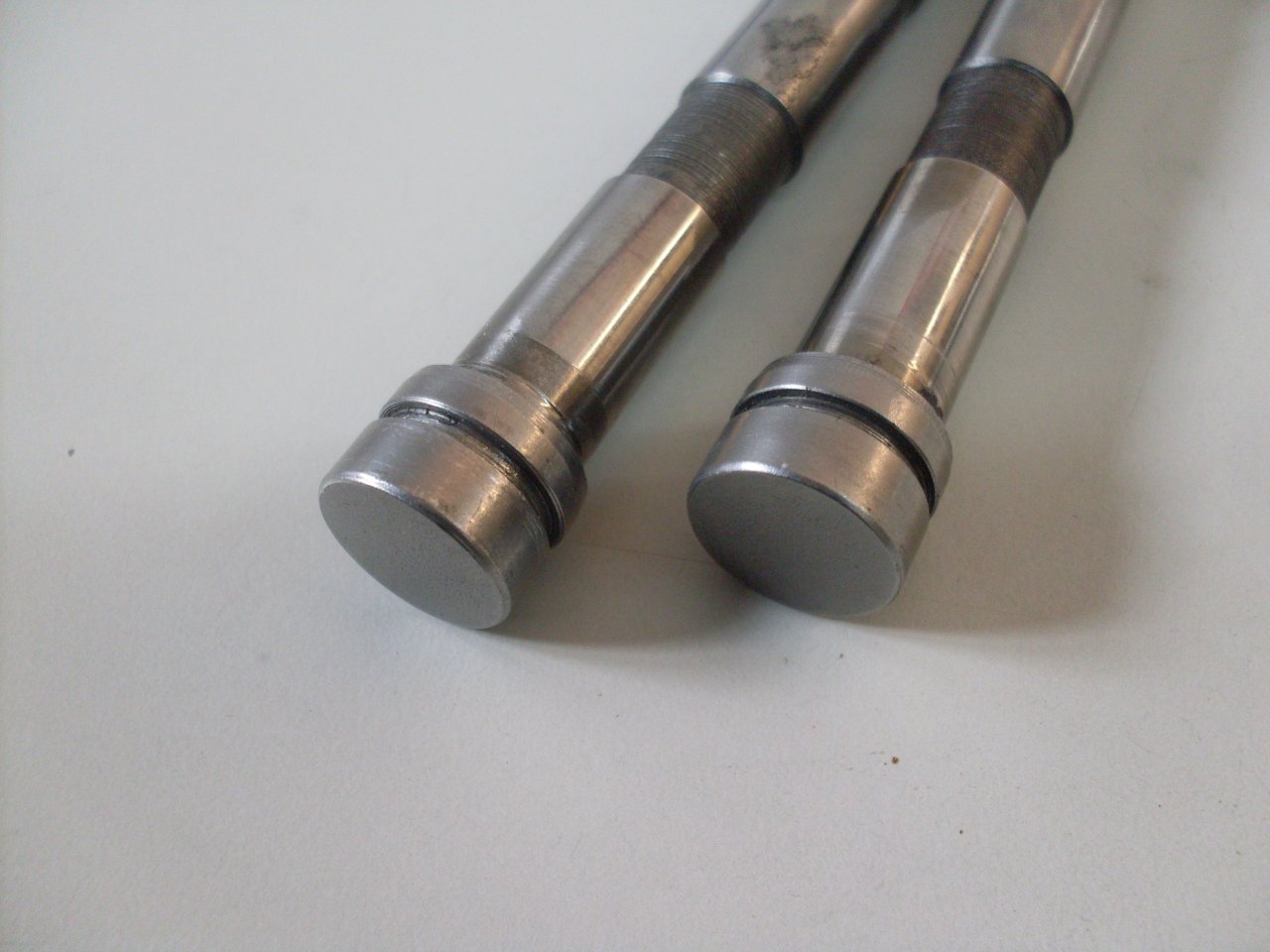
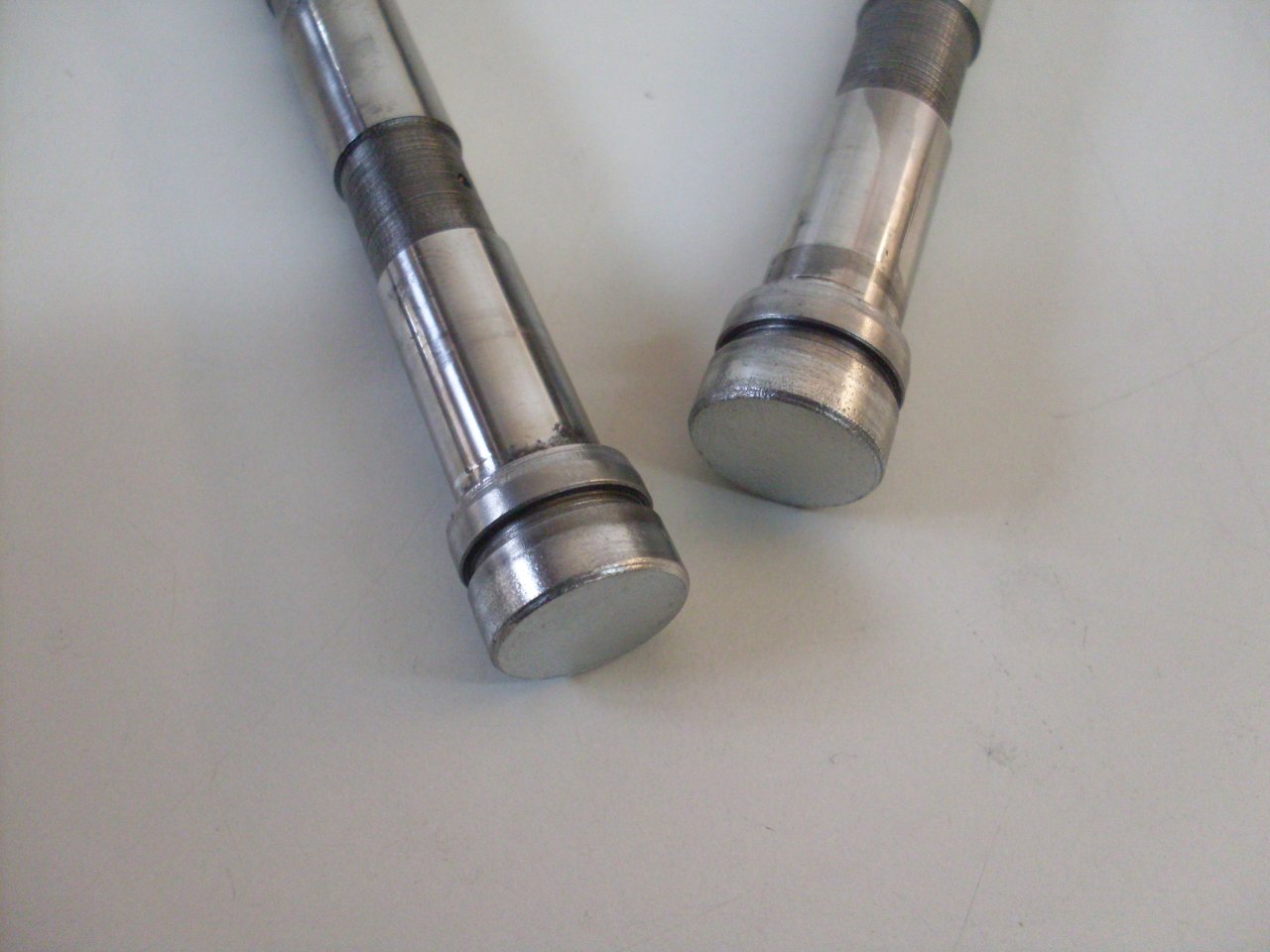
Many people
don't know it, but the spindles (at least on some model-years) are not
one piece..
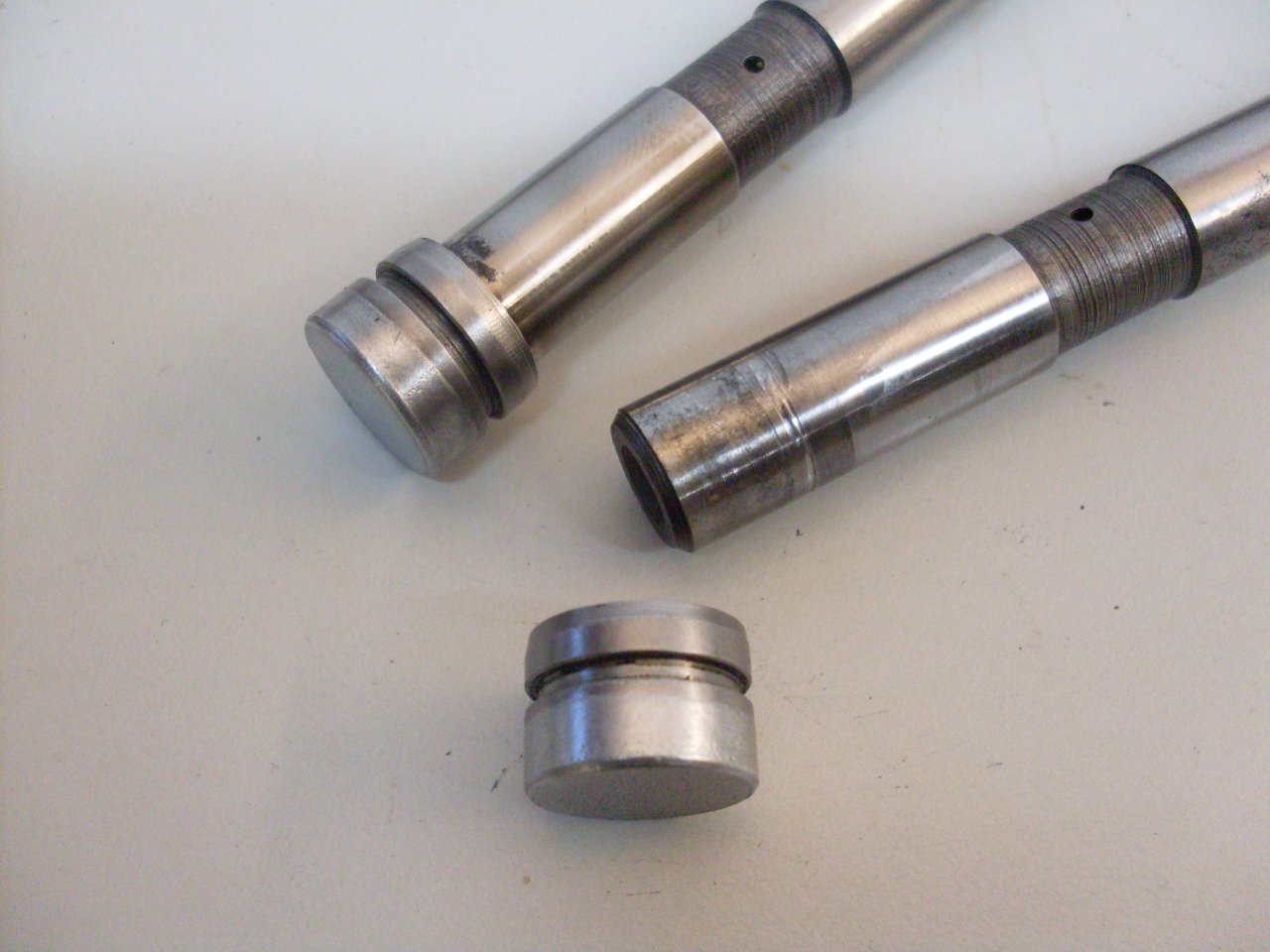
For O rings,
you can buy 100 for not much more than the four or five might go
through before you're sure they're OK. You can experiment with
different hardnesses, too. These are identical size, but one
bag is 50 durometer (softer), and the other is 70 (harder). I
don't know what was stock on a new bike, but I also don't have high
confidence that the hardness you get from parts suppliers is necessarily what
the factory used.
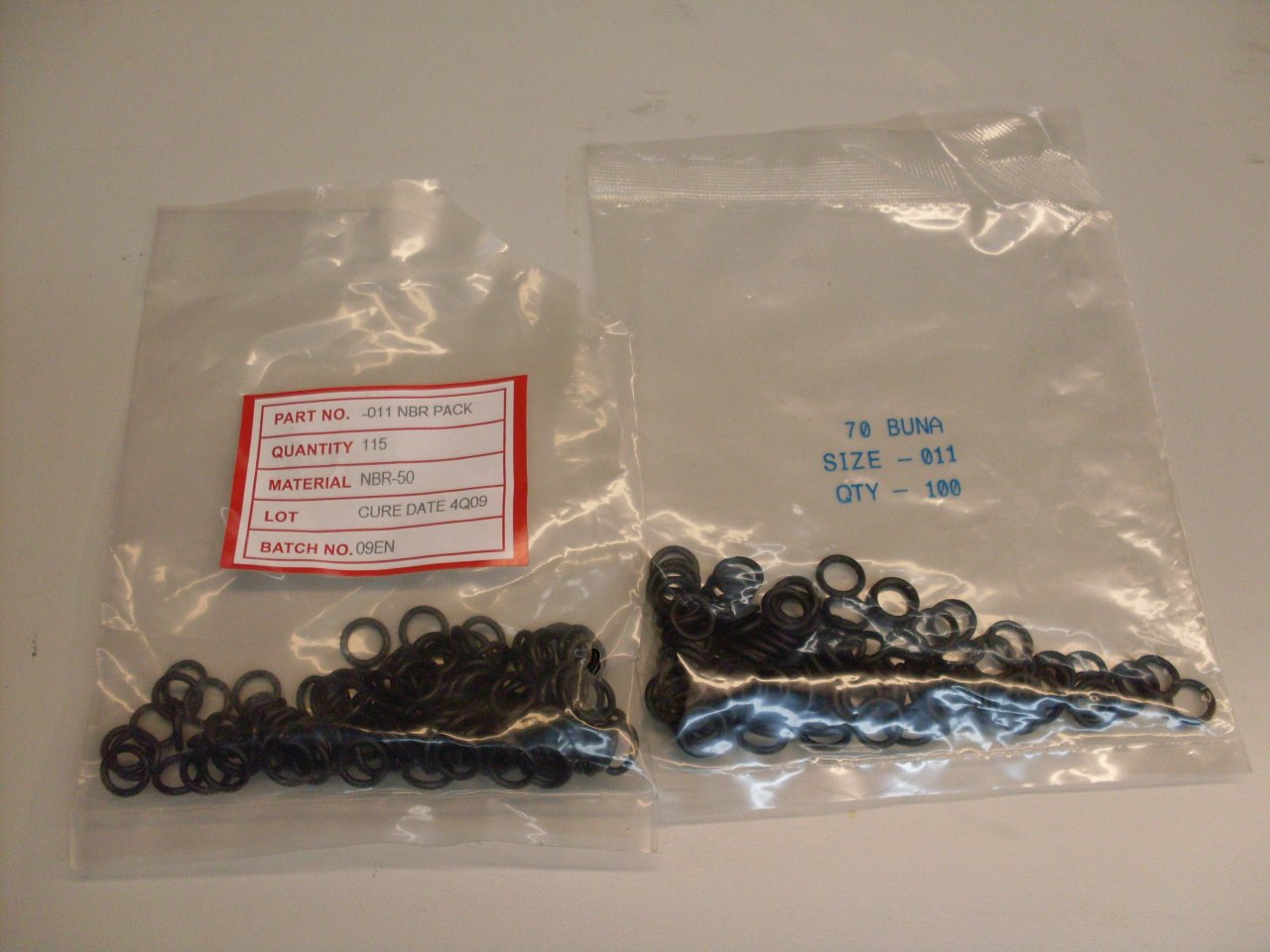
My rocker
housings had been polished up pretty nice thirty years ago, and though
they were grimy, they came back pretty easily. While
everything is stripped, it's a good time to make sure all the oil
galleries are clear and clean. like this one that feeds oil to the
spindle.
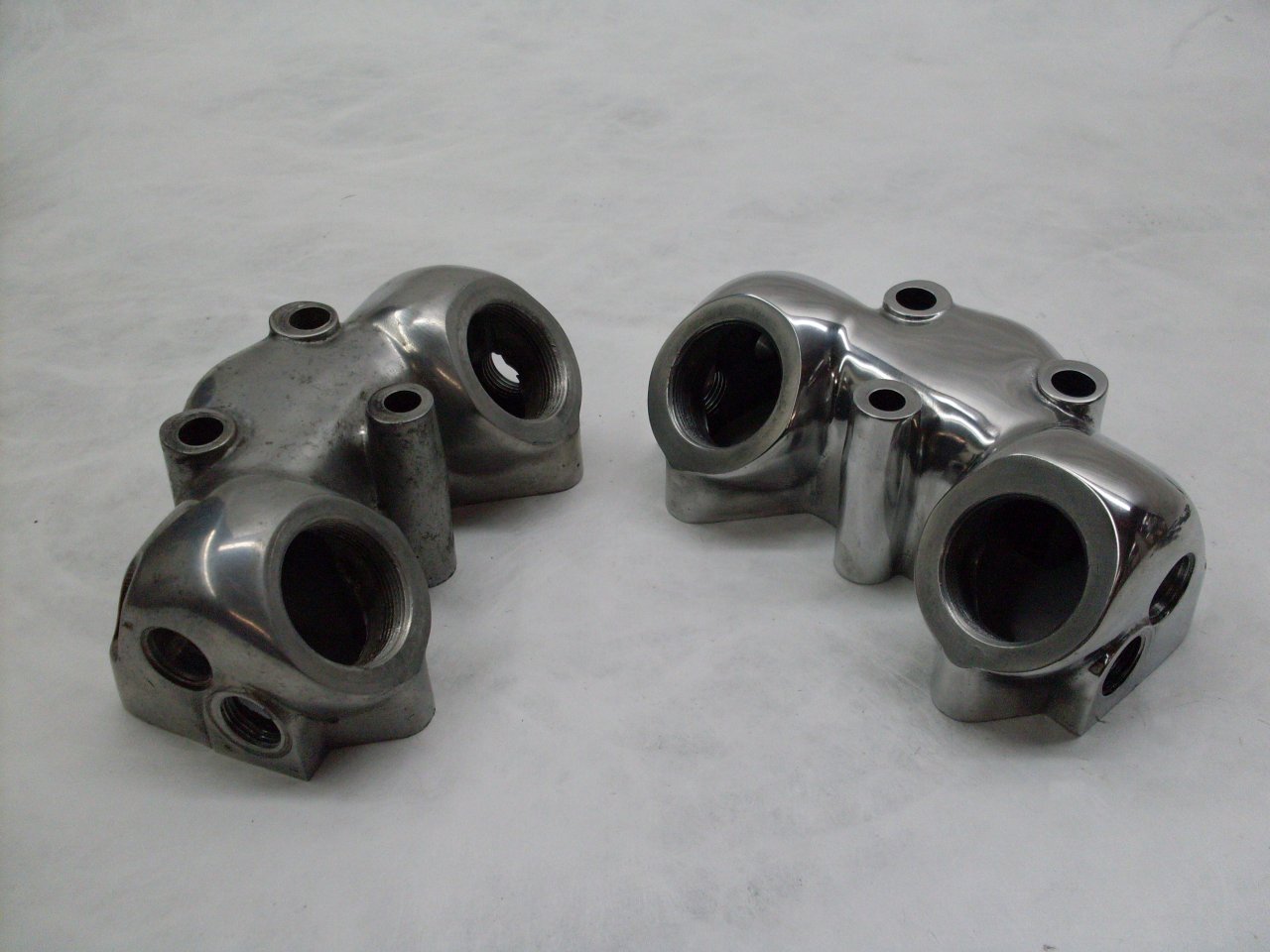
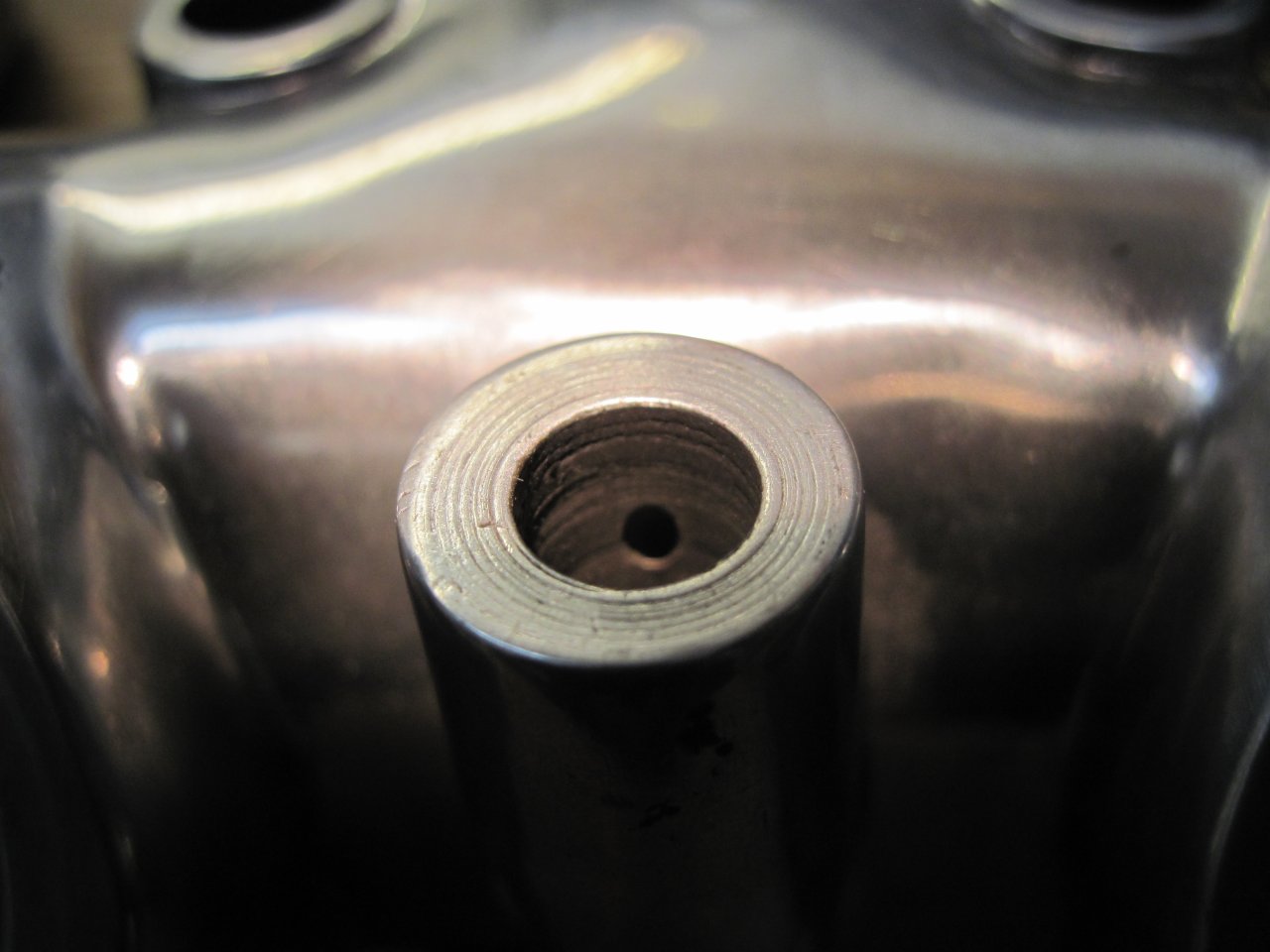
One other
area to watch out for, and it caught me at first, is that sometime in
1968, Triumph changed the way the ball ends of the rockers and the
valve ends were
lubricated, moving from drilled holes on the rockers
to notches on the
ends. This change necessitated a change in the way the rocker
box was assembled. Specifically, the flat and spring
("Thackeray") washers shown on the outside ends of the two rockers in
the picture below have to be assembled in the order shown for rockers
with the end notch. Before this change, the flat washer on the
threaded end of the spindle had a smaller ID than the others.
After the change, all four flat washers were the same. As
late as 1971 an possibly later, some
parts and/or service manuals were still showing this incorrectly.

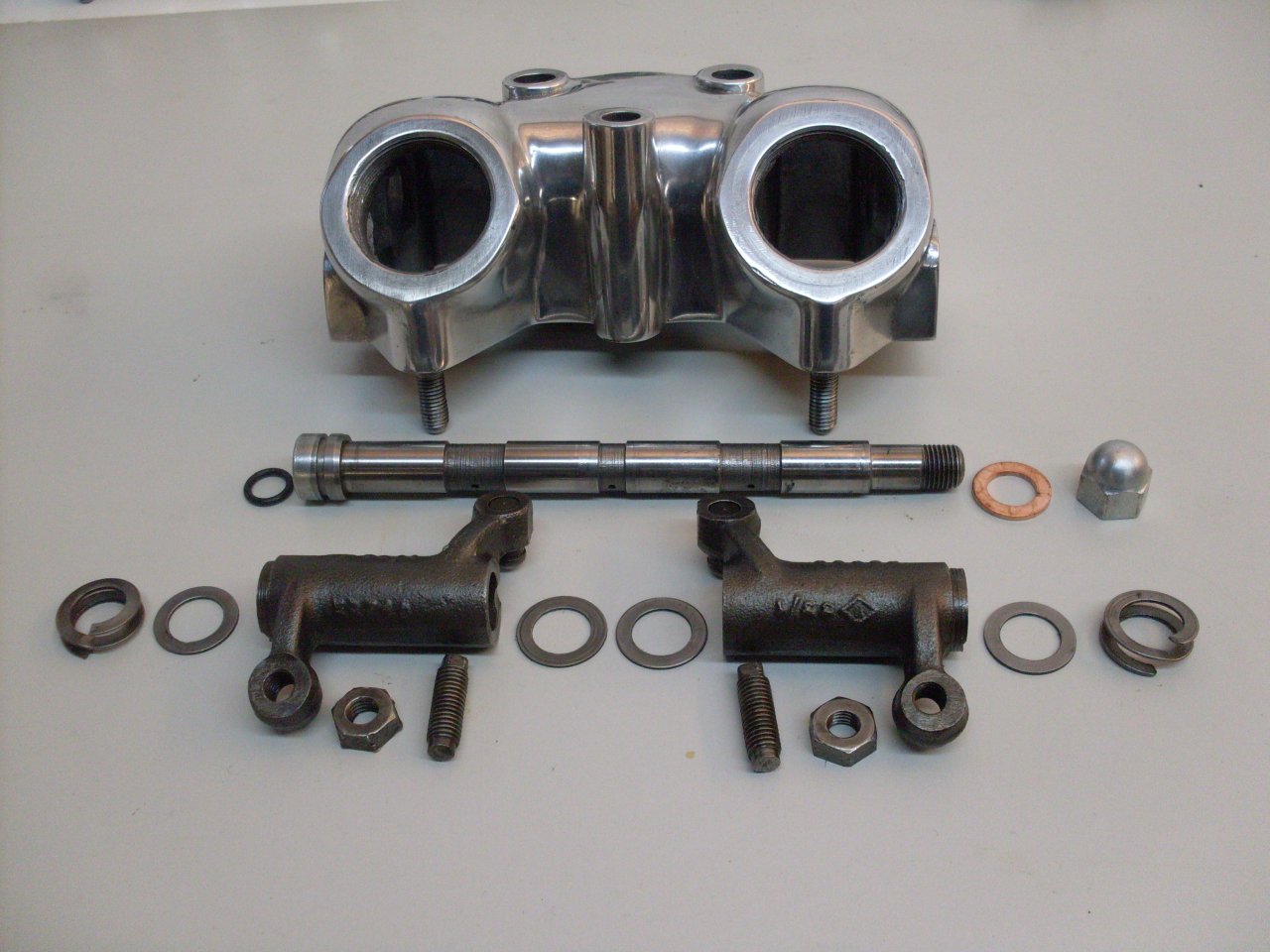
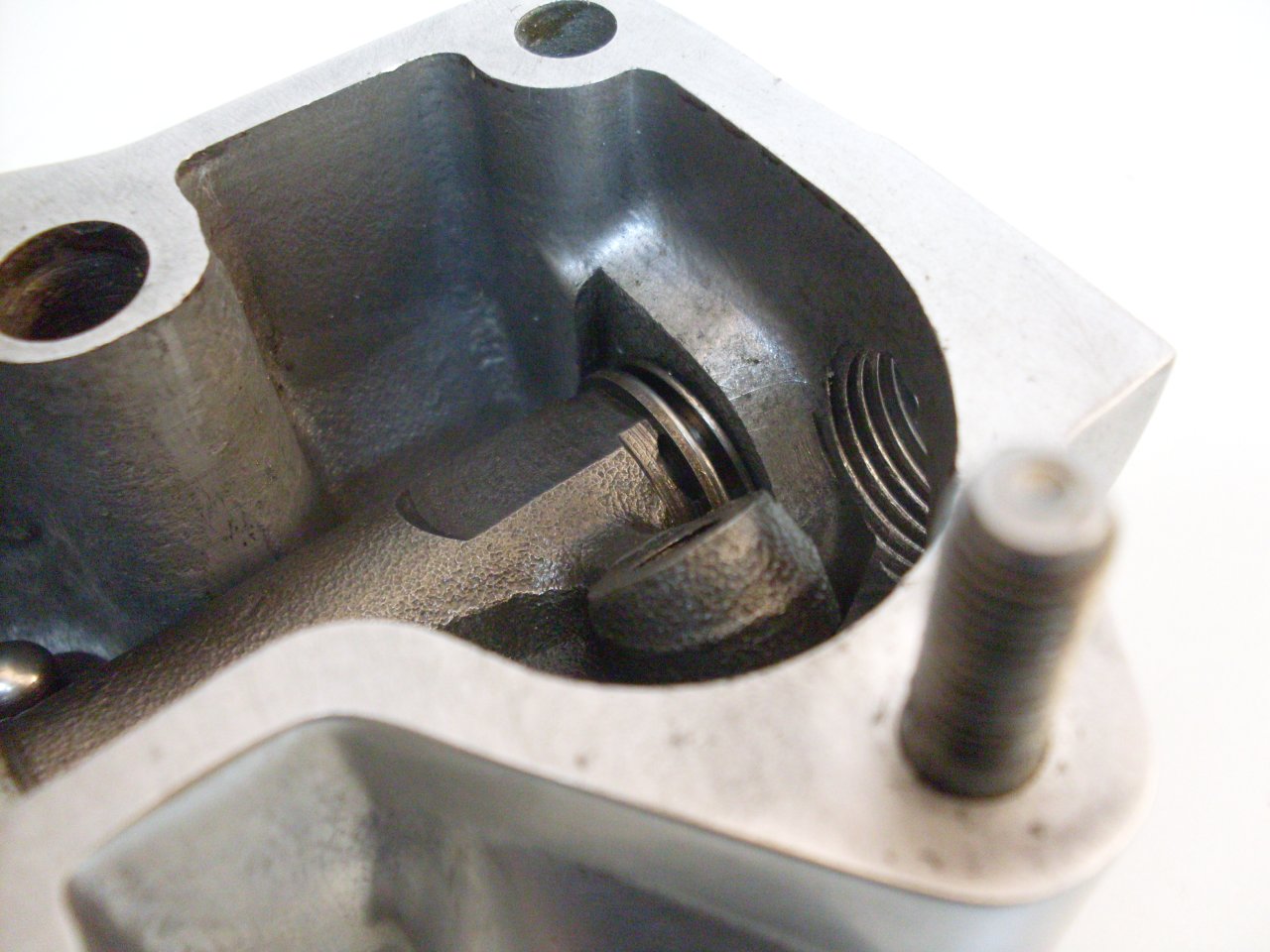
Assembly went
well. I lubed up the chamfers, and the spindles went home
nicely. It's best to press the spindles in rather than pull
them in with the end acorn nut. That's how I found out that
the spindles were not one piece.

Polished up the rocker
adjusting pins, removing some worn areas:
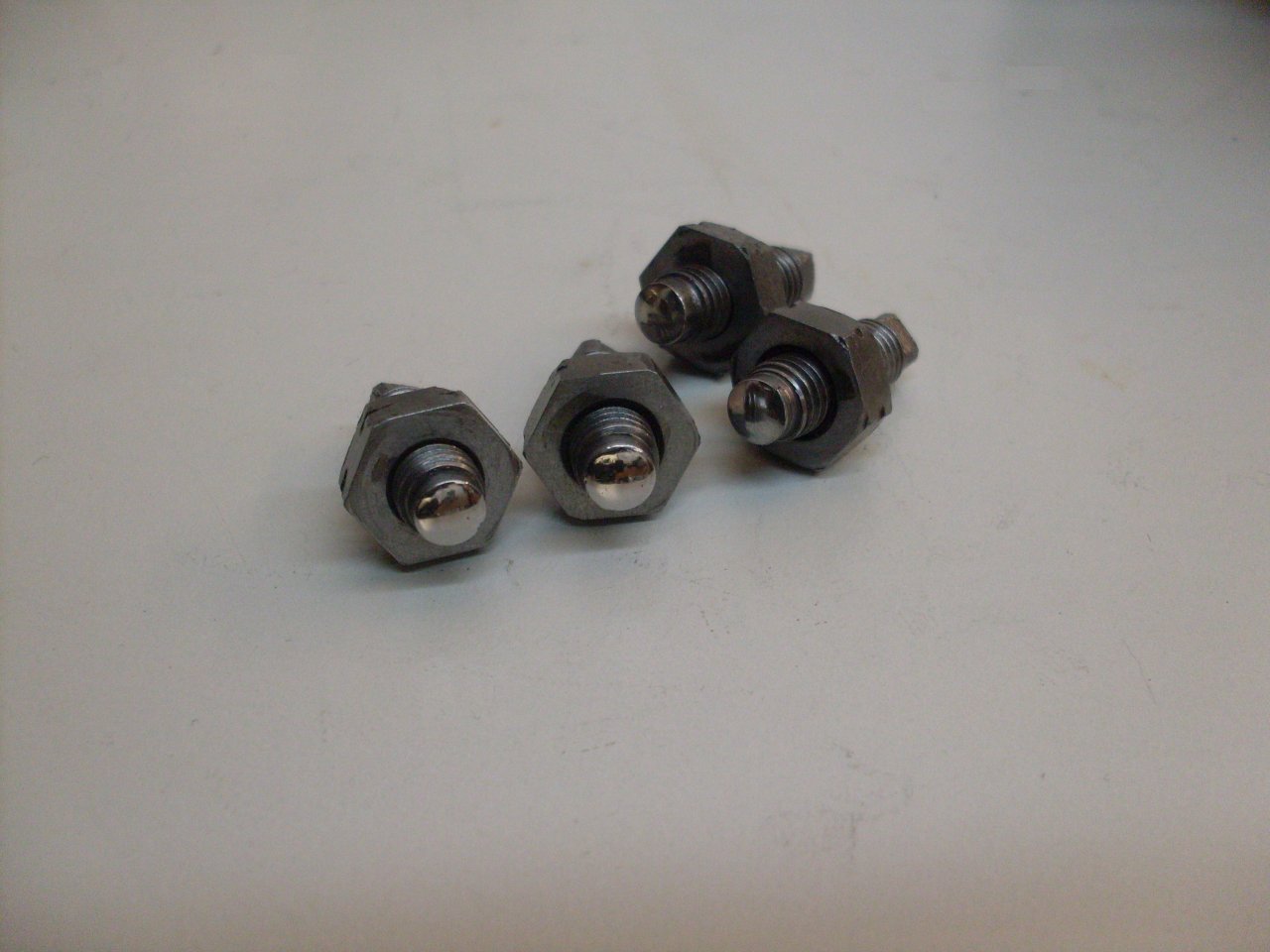
All back together.
A final buffing and they are ready to mount.
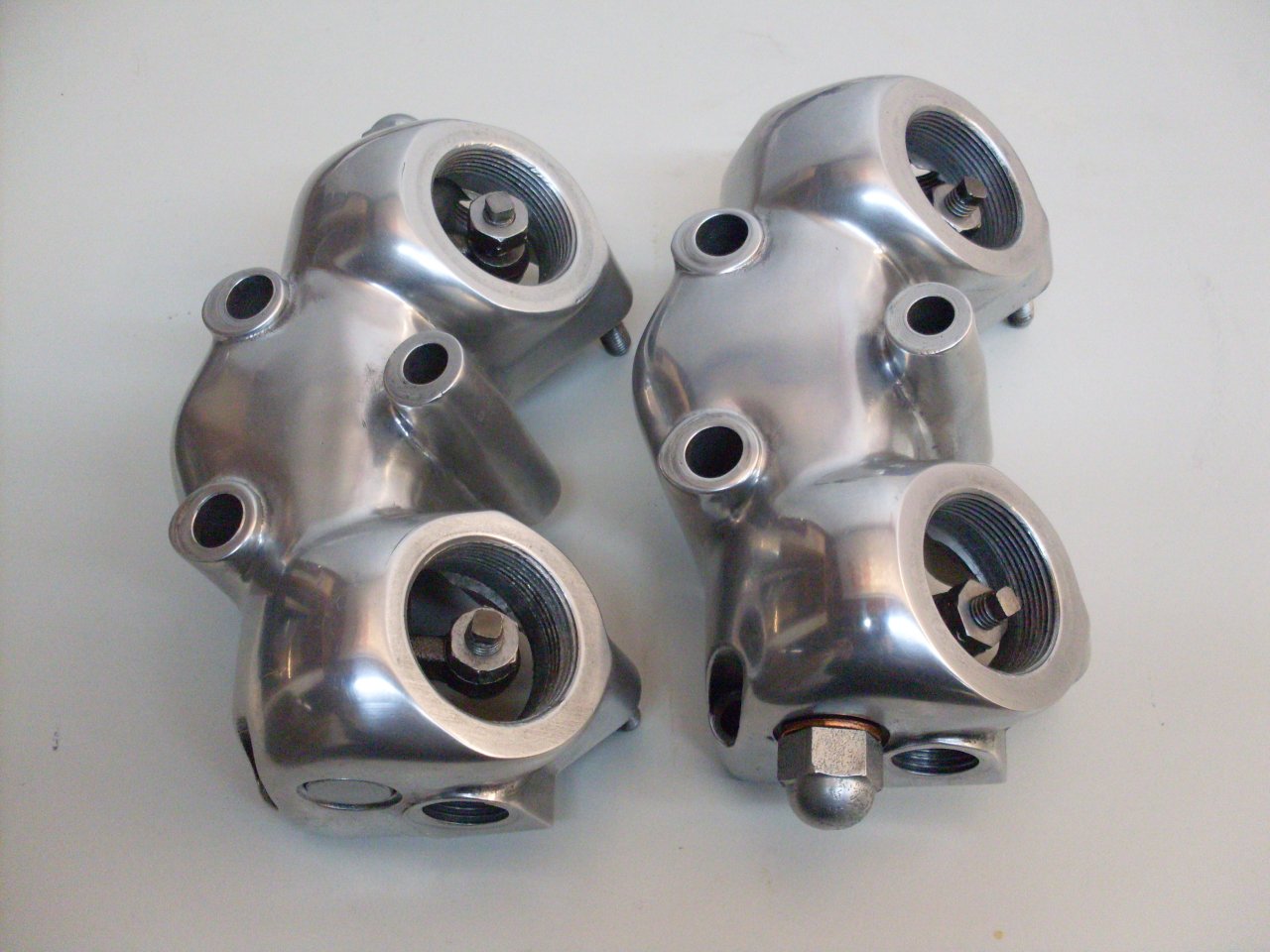

UPDATE--After I wrote this up, I still had a queasy feeling that
something wasn't right with the O rings. I took the spindles out
again, and found that even after the heroic measures I went to to get
the rings installed, they were still damaged. The little sliver of
shaved off rubber was hiding in the space between the spindle and the
box bore. To make a long story short, I've concluded that the O ring
listed in the parts book for this (and some other) model bike is
incorrect. If you really want the long story, go here.
To other pictures
Send comments to: elhollin1@yahoo.com